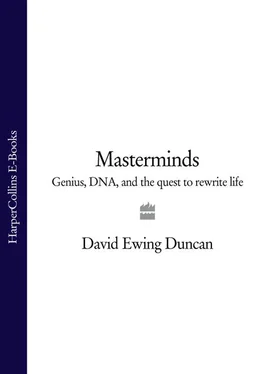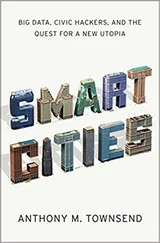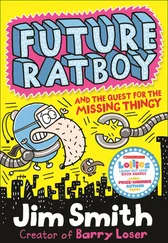Berg took this question to a famous conference in 1975 at Asilomar, near Monterey, California, where he and others persuaded their fellow geneticists to cease certain recombinant DNA experiments while safety issues were tested and guidelines for containment of dangerous experiments could be formulated. This process led to thirty years of recombinant DNA experiments without a single accident. Berg’s experiments won him the Nobel Prize, with Walter Gilbert and Fred Sanger, in 1980.
Berg was careful, when another scientist might have forged ahead despite the dangers. For instance, his fellow geneticist James Watson argued forcefully against a self-imposed moratorium on recombinant DNA work at the 1975 Asilimar conference, insisting that the process could remain contained and safe in the lab, and that a moratorium would frighten the public and might lead to a ban by the government. (This nearly happened.) Personality played a critical role in this debate between Berg and Watson.
The science emanates from their minds, and from their personal stories, but also from who they are: their hopes and fears; their humility, their arrogance, and the ambition that drive them forward into discoveries and dictates how they react to the possibility of miracles, and of disasters. “Science seldom proceeds in the straightforward logical manner imagined by outsiders. Instead, its steps forward (and sometimes backward) are often very human events in which personalities and cultural traditions play major roles.” This comes from James Watson, codiscoverer of the double-helix structure of DNA in 1953 and an obnoxious, dazzling personality himself. The science historian Horace Judson, author of The Eighth Day of Creation , remarks that the personality of scientists “has always been an inseparable part of their styles of inquiry, a potent if unacknowledged factor in their results. Indeed, no art or popular entertainment is so carefully built as is science upon the individual talents, preferences, and habits of its leaders.”
“The whole idea that science is conducted by people working alone in rooms and struggling with the forces of nature is absolutely ridiculous,” says Sydney Brenner, a pioneer of molecular biology famous for talking incessantly with colleagues to tease out ideas. “It is a social activity of the highest sort.”
Why is this important? Because, as the Harvard biochemist Stuart Schreiber once told me over coffee, his eyes magnified through thick wire-rim glasses wrapped around a bald head that looks both thuggish and hip: “There’s a high probability that for Homo sapiens , the process of evolution as we currently think about it, as natural selection, is for all intents and purposes over. It is going to be replaced by our desire and capability to tinker.”
There is the fiery-tempered and temperamental Watson, who in his midseventies still keeps pinups of busty young women in his office close to his Nobel medal. An atheist who believes the double helix proves that God does not exist, Watson has strong views about everything from stem cells to his belief that genetic flaws in behavior as well as disease should be fixed.
There is Craig Venter, a stormy renegade with the gravitas, ego, and devilish brilliance of Faustus, though he also has a cornball sense of humor. In the late nineties, he took on the scientific establishment during the Human Genome Project and succeeded in getting the job done faster and, at least according to Venter himself, better. He ranges about like a junkyard dog snarling and laughing as he brilliantly upsets applecarts. Venter restlessly sails the seas in his yacht, Sorcerer II , collecting microbes from the oceans to sequence genetically, while back in his lab in Maryland he leads a team creating synthetic life-forms.
And then there is Francis Collins, the can-do Boy Scout of molecular biology with a steely resolve and intense competitiveness. Chief of the National Institutes of Health genomics programs, he is a born-again Christian and codiscoverer of the gene for cystic fibrosis, who went head to head with Venter during the race to sequence the human genome. Collins headed up the band of stalwart gene hunters who pursued this nearly $3 billion quest with a religious zeal, proselytizing its benefits and fighting to keep the DNA they sequenced free and publicly available.
Others you will meet in these pages are working to create new life or to extend it, to grow new organs using stem cells, to bioengineer genes—and, in the case of the former Soviet bioweapons expert Ken Alibek, to snuff out the life of his former nation’s enemies when he was working for the secret Union of Soviet Socialist Republics (USSR) bioweapons program in the seventies and eighties.
When I set out to write this book, I experimented with several methods to describe the role of personality in science. In the end, I chose and expanded on a strategy used with delightful effectiveness by Lytton Strachey in his 1918 Lives of Eminent Victorians . Insisting that too much material existed on the recently finished Victorian age to make sense of it in a single book, he picked out four representative figures to profile, among them Florence Nightingale and General Charles Gordon. He described his method as dipping a bucket into the vast ocean of material on his subject, “which will bring up to the light of day some characteristic specimen, from those far depths, to be examined with a careful curiosity.”
I, too, have chosen a few representative people, though in this book I’ve added to Strachey’s idea an element that he would have understood. He chose characters specifically to point up both the grandeur and the flaws of figures whom his parents’ generation had revered and worshiped as heroes and geniuses. He elevates them to godlike status by treating them as standard-bearers of the Victorian era, only to reveal them as all too human. Yet they remain exalted throughout as forceful stories and symbols of the glories and disasters of their time. I have chosen nine scientists with the same emphasis in mind, but with an added element that defines a major difference between our era and Strachey’s. Today, we don’t need to reduce heroes of a former generation to mere humans. In this age of reductionism, that happens as a matter of course. I have taken these very human, and therefore flawed, individuals and assigned them each a mythic status by assigning them a character from myth, fiction, or history—Prometheus, Eve, Zeus. Not because I consider these scientists gods or demigods, but because I believe that to appreciate these figures whose work is so critical to the future of life accurately, it is useful to see them through the lens of stories, myths, and characters that have endured for centuries as devices to understand and absorb the import of major moments in human history.
I agree with Paul Berg that as we move forward with science we must be cautious. Scientists need to be keenly aware of not only potential dangers, but the ethical and social impact of their discoveries. Yet I also believe that many of the discoveries and possibilities will happen regardless of what society thinks. As in splitting the atom, once the knowledge exists, the science will find a way to happen, possibly in secret in countries where neither ethics nor the public’s fears much matter. This makes it even more crucial that this science be allowed to go forward while being closely watched, with appropriate safeguards.
Back in Kari Stefansson’s office, I’m reminded of why I have a personal stake in understanding this Icelandic gene master. We’re sitting in deCode’s new building, a blond wood, brick, and glass palace rising on the edge of Reykjavik like a gigantic piece of Skandia furniture. This in a city of mostly squat, functional, wood-slate buildings that seem hunched over, as if holding their heads down in a storm. Rain does fall here frequently, though the nearby Gulf Stream usually keeps the temperature above freezing, even in the winter.
Читать дальше












